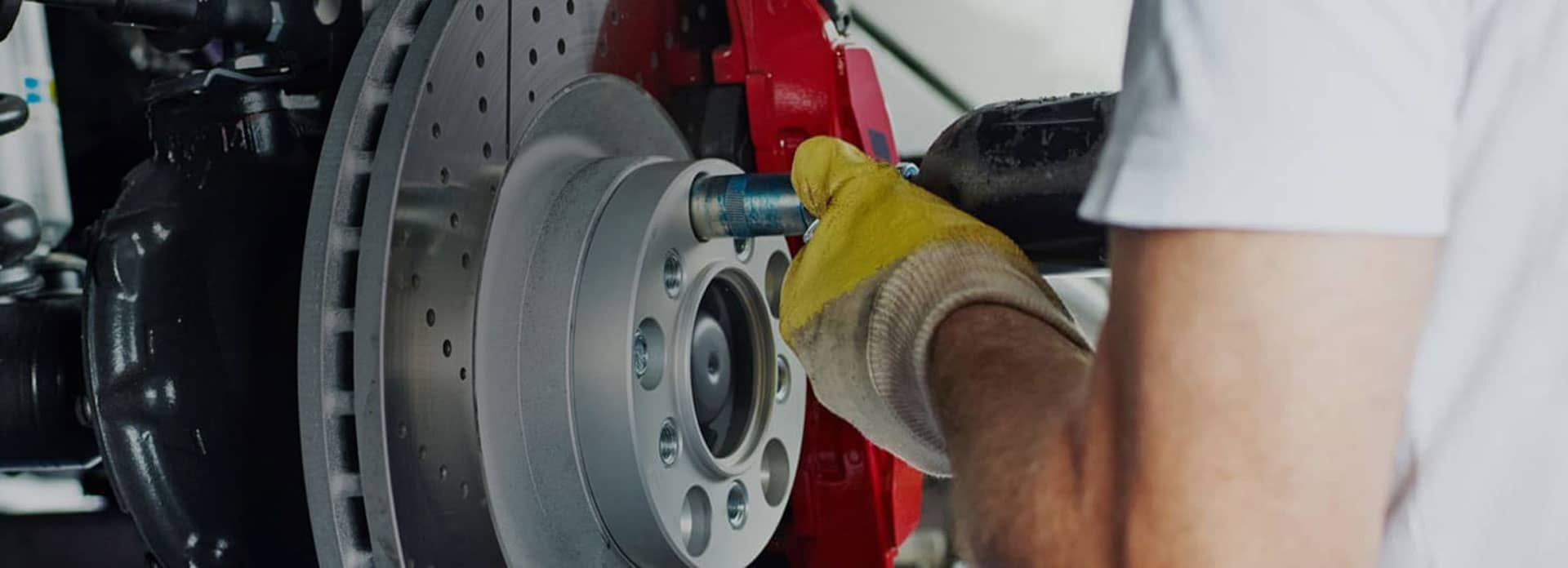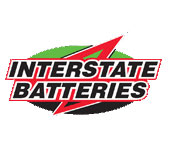
AUTONET TV
Archive for March 2024Let's Clear Some Things Up (Headlight Restoration)Posted March 31, 2024 10:07 AMYou know how exposing your skin to sunlight can cause sunburn and other unhealthy things. Sunlight can also create major problems for your headlights. After they've been exposed to ultraviolet light, acrylic headlights can yellow and fog due to oxidation. And when that happens, less light can pass through the plastic, reducing the effectiveness—and safety—of your headlights. It's not just the UV light that causes headlights to turn cloudy. Road grime and debris gets kicked up and can scratch the plastic, diffusing the light that should pass through them when they're clear. Plus, when your vehicle was new from the factory, the headlights had watertight seals all around to prevent moisture from getting into them and fogging them up with water vapor. Just like clouds can hide the sun, tiny water molecules can diffuse the light from your headlight bulbs. Sure, you could buy replacement parts and start fresh. But the good news is many vehicle repair facilities can restore your original headlights to perform like they did when you first bought your vehicle. Here's how it works:
Visibility at night is vital for safe driving, and if your headlights aren't performing up to their potential, the less you'll be able to see ahead of you. There are many advantages of having your headlights restored rather than buying new or aftermarket replacements. It's friendlier to the planet since plastics are made of oil, so it's reducing the amount of plastic that is manufactured. And it's usually cheaper to have your headlights restored rather than replaced. Consider headlight restoration a way to literally recycle those parts of your vehicle. That seems to be perfectly clear! Joe D'Auria's Auto Follow the Bouncing Vehicle (Bad Struts and Shocks)Posted March 24, 2024 8:07 AMIf you hit a bump in the road and your vehicle just keeps bouncing up and down for a lot longer time than it used to, you may have bad struts and shocks. They're the things that help to keep your vehicle's wheels and tires planted to the road surface. But they don't last forever. With care and depending on where and how you drive, shocks and struts should be replaced at intervals ranging from 50,000 miles/80,000 km to 100,000 miles/160,000 km. If you drive on bumpy roads with a lot of potholes, that interval will likely be shorter. Rough surfaces can take their toll. But how do you know if your shocks and struts are doing their job properly? The best way is to have your vehicle checked by a technician. He or she can inspect the shock absorbers and struts for leaks, corrosion and damage. Mounts and bushings can also go bad and they should be evaluated as well. A thorough examination by a technician will also include looking at other suspension parts. Some may contribute to making your vehicle behave the same way if they're broken, corroded, worn or bent. If you need new shocks and struts, your service advisor will make sure that you get those that meet manufacturer's specifications. That's important because they want to make sure you're getting the handling and performance engineers designed your vehicle to have. Joe D'Auria's Auto When "Shady" is a Good ThingPosted March 17, 2024 8:03 AMJust like your skin can burn from too much sun, so can the paint on your vehicle. It can turn dull, oxidize and fade the more ultraviolet rays beat down on it. One solution is to park in a shady spot, or you can buy a cover for your vehicle and put it on when you know it's going to be sitting in the sun for awhile. Yes, it takes a couple of minutes to put on, but in the end, keeping the gloss on your paint will help it retain its beauty… and its value. And it's not just the sun that can damage your vehicle's paint. Grit, bird droppings, sap, dust and dead bugs can all ruin the paint. So, keep your vehicle clean. Wash it with a soap made especially for vehicles. Dry it with special towels that won't scratch your paint. Remember: DON'T WASH YOUR VEHICLE IN THE SUN. Once your vehicle is washed, protect the paint even further with a coat of wax. DON'T WAX YOUR VEHICLE IN THE SUN, EITHER. Don't forget the vehicle's interior. Plastic components inside can literally disintegrate when sunshine heats them up. That's what causes that oily film on the inside of the windows. So, pick up some of those reflective panels that unfold, placing them in the windshield and back window when you know the sun and heat are going to be intense. They'll keep out the ultraviolet light and help the interior stay cooler as well. That will help prevent upholstery from fading and plastic from cracking. While you're at it, keep your interior's interior clean, too. That dust and dirt can literally bake into the dashboard, the seats, console and carpeting. There are cleaning products designed to clean your vehicle's interior that won't stain it or dry it out. You invested a lot of money into that vehicle. The sun and dirt are just waiting to destroy it. Defend your valuable vehicle against the elements. Hey, it may not wind up on display in a museum, but it'll look great and last longer with just a little TLC. Joe D'Auria's Auto
1401 BRACE RD
CHERRY HILL, NJ 08034
(56.427.9422
Combustion Choreography: Timing Belt Replacement at Joe D'Auria's Auto in CHERRY HILLPosted March 10, 2024 8:22 AMHave you ever seen a ballet performance? Have you wondered how all of those dancers manage to travel all over the stage jumping and twirling and never crash into each other? That's the job of a choreographer. Joe D'Auria's Auto Not Too Hot and Not Too Cold (Temperature Gauge)Posted March 3, 2024 10:44 AMYou know your body temperature is supposed to be 98.6 degrees F, 37 degrees C. Your vehicle has a normal temperature, too, and if you pay attention to it, that can save you some big headaches down the road. Many vehicles have a temperature gauge on the dash that takes the temperature of the engine's coolant. Some have a thermometer symbol, some read C-H (cold to hot). Many will have a red zone that shows when water temperature is getting into the danger zone. Others are digital and have a red warning light that signals overheating. And some vehicles have a light that goes on when the engine temperature is out of the normal range. If your vehicle has a gauge, pay attention to it. If you need help locating it, ask one of our Joe D'Auria's Auto experts to give you a quick explanation. Chances are when the vehicle has been running for 15 minutes or more, the temperature gauge will settle into its own "normal" zone, often just below the midway point. If you have a digital readout, remember what that "normal" temperature is. Here's why. At any point when you're driving, the temperature gauge is the quickest way to get a sense that the engine is running the way it should, a quick health checkup, as it were. Say you're on a 3-hour trip, glance at that gauge every hour or so. It should always be in the same spot. If it starts to move one way or the other, you may be able to catch a problem before it gets serious. Pay special attention to it moving into the hot zone. The needle on the gauge is the easiest and least distracting way to see an engine heating up, but on a digital gauge, start paying attention if the temperature reaches 240ºF/115ºC or more. Remember, though, that just because the gauge reads "hot" doesn't mean your engine is on the verge of burning up. It could be a bad sensor and the engine will be at a normal temperature. But it also could be a failing water pump, coolant leak or thermostat. By pulling off the road and observing your engine, it will give you a pretty good idea if it's running hot or not. If the gauge is too "cold," it could be a broken gauge or thermostat sticking open. Usually being in the cold range isn't as worrisome, but you should have it checked out since other systems may be affected. Heat is one of a vehicle's worst enemies, especially when it comes from within. Know your vehicle's normal temperature and keep an eye on it.
| ||
SearchArchiveApril 2018 (18)May 2018 (4) June 2018 (4) July 2018 (5) August 2018 (4) September 2018 (5) October 2018 (4) November 2018 (4) December 2018 (5) January 2019 (5) February 2019 (4) March 2019 (5) April 2019 (4) May 2019 (4) June 2019 (5) July 2019 (4) August 2019 (4) September 2019 (5) October 2019 (4) November 2019 (4) December 2019 (5) January 2020 (5) February 2020 (4) March 2020 (5) April 2020 (4) May 2020 (5) June 2020 (4) July 2020 (4) August 2020 (5) September 2020 (4) October 2020 (4) November 2020 (5) December 2020 (4) January 2021 (6) February 2021 (4) March 2021 (4) April 2021 (4) May 2021 (5) June 2021 (4) July 2021 (4) August 2021 (5) September 2021 (4) October 2021 (5) November 2021 (4) December 2021 (4) January 2022 (6) February 2022 (4) March 2022 (4) April 2022 (4) May 2022 (5) June 2022 (4) July 2022 (5) August 2022 (4) September 2022 (4) October 2022 (5) November 2022 (4) December 2022 (4) January 2023 (5) February 2023 (4) March 2023 (4) April 2023 (5) May 2023 (4) June 2023 (4) July 2023 (5) August 2023 (4) September 2023 (4) October 2023 (5) November 2023 (4) December 2023 (5) January 2024 (5) February 2024 (4) March 2024 (5) April 2024 (4) May 2024 (1) | CategoriesMaintenance (35)Fluids (9)Serpentine Belt (3)Fuel System (33)Tires and Wheels (29)Automotive News (7)Shocks & Struts (5)Fuel Economy (3)Service Standards (9)Cabin Air Filter (5)Windshield Wipers (5)Timing Belt (4)Battery (11)Auto Safety (5)Suspension (3)Service Intervals (4)Brakes (12)Steering (8)Inspection (4)Older Vehicles (3)Winter Prep (3)Drive Train (6)Emergency Items (1)Check Engine Light (3)Parts (5)Exhaust (8)Alignment (10)Air Conditioning (6)Headlamps (4)Safety (4)Diagnostics (4)Differential Service (2)Monitoring System (2)What Customers Should Know (38)Oil Change (4)Alternator (4)Dashboard (1)Cooling System (6)Transmission (8)Trip Inspection (2)Water Pump (1)Keys to a long lasting vehicle (1)Diesel Maintenance (1)Tires (4)Warranty (1)Fuel Saving Tip: Slow Down (1)Safe Driving (1)PCV Valve (1)Brake Service (1)Engine Air Filter (1)Tire Rotation and Balancing (2)Wheel Bearings (1) | |

OUR REVIEWS


Steve Bender, 01/11/2022Joe, Chris, Ryan and the rest of the crew have been taking care of our cars for 30 years. They're the most honest mechanics I've ever interacted with and have worked on our various cars including: Volvo, Ford, BMW, Acura, Benz, Hyundai, Honda... If there were a button for 11 stars, that's the one I'd hit!

Get free Coupons
Take advantage of these great offers!









